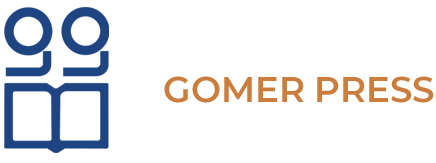Printing a book can be complicated, so we try to make the process as simple as possible.
New clients often ask us these questions asked about printing and binding their book.
File Preparation
This is possible, but an expensive option. However, an unprinted dummy book block can be arranged free of charge from our paper suppliers, as can samples of any other materials in the job.
The book should be submitted with all the pages in a single file. Send the artwork for your cover and endpapers separate files.If your cover has any foiled or spot UV details, another file will be required for these.
Inkjet proofs are colour calibrated to the press, measured on output with an inline spectrophotometer, and highly accurate for colour and image quality… but not paper.
Laser proofs, or Ozalids are physical proofs intended for checking content. These proofs are not intended to show colour accurately, image quality, or paper quality.
Your print ready files should be in PDF format.
A bleed is a border around your page made by extending the images or artwork. This is to ensure no white lines appear when the paper is trimmed. The simplest way to work with bleeds is by adding 3mm to each side of the page. In total, the height and width should both increase by 6mm.
A softproof is a digital proof processed by our pre-press software, and is can highlight issues caused by font placement or transparency settings.
A wet proof is printed on the actual paper stock of the job, using the XL106 speedmaster.They are therefore accurate for content, colour, image quality and paper stock, and consequently the most expensive method of proofing.
Designing a Book
Certain trim sizes print more cost effectively than others. Throughout our factory, the most efficient formats can be found on our technical support page.
A book can have any number of pages, as long as it doesn’t exceed the maximum spine width. We can print and bind books with a maximum spine thickness of 60mm. The thickness of a book can also be increased and decreased by the bulkiness of the paper inside.
A softback book can have a simple cover made of artboard, or an 8 page folded cover. A hardback book can have a printed paper case (usually referred to as a PPC or PLC). A hardback book can also be cased in imitation or real cloth, and many other textiles. Books cased in cloth are usually supplied with a printed dustjacket.
This depends on the kind of publication you’re publishing. Matt coated paper is usually best for artbooks, where a book contains high quality colour images alongside areas of text. Silk coated paper is also a popular choice. Bookwove is usually the best paper for books with predominantly text, like a novel. Gloss coated paper is sometimes used for titles with high quality imagery and minimal text. Remember to look out for the FSC logo which is assurance that the paper has been sourced in a sustainable manner.
A book can be any size! But printers can have different limitations depending on the kit they use. At Gomer for example, the maximum width a book can be is 300mm, and the minimum thickness, or spine width of a book needs to be 7mm to be section sewn. A book thinner than this will need to be perfect or notch bound instead.
